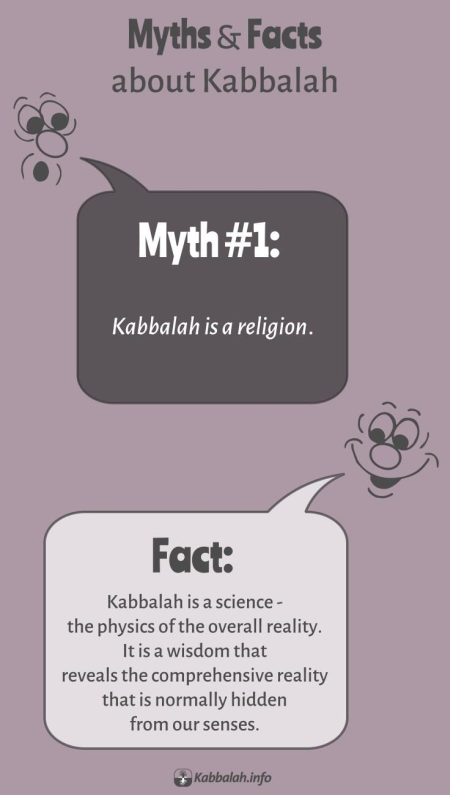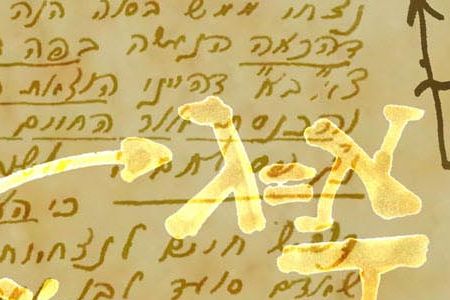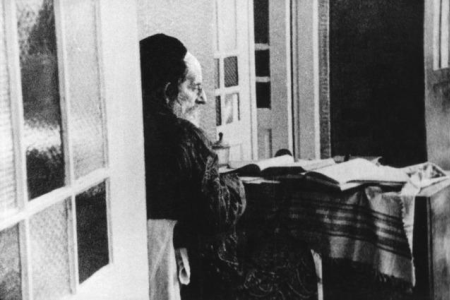Archive for August, 2014
Stop Wasting Time by Not Knowing What the Purpose of Your Life Is. Discover It Today!
Now You Can Interpret the Bible Properly and Get Everything Out of It
In the beginning God created the heaven and the earth. Now the earth was unformed and void,and darkness was upon the face of the deep;and the spirit of God hovered over the face of the waters.And God said:“Let there be light.”And there was light.And God saw the light,that it was good;and God divided the light from the darkness.And God called the light Day,and the darkness He called Night.And there was evening and there was morning, one day. (Gen.1:1–5)
Every one of us, when hearing these verses, is moved in some way. However, we rarely settle for the simplified interpretations that leave many questions open. What does the Torah really talk about? And most importantly, what for?
All the holy Scriptures speak of one thing only—the upper world and how it was created and how the upper world created our world. The Bible doesn’t just describe what one finds in that world, but also teaches one how to see it. The gradual revelation of the upper world is called the “spiritual ascent,” or the degrees of spiritual rise. The wisdom of Kabbalah is a science that teaches the structure of the upper world, using sophisticated language, drawings, and schemes. The Torah describes the upper world for us in an ordinary language.
Do You Make these Mistakes When it Comes to Interpreting the Bible?
If we try to translate the language of the Torah into the language of the Wisdom of Kabbalah, we see that the Torah describes for us the process of the creation of the upper world, its structure, the design of its development, and after that it depicts the process of humankind’s creation. However, the Torah does not refer to a person of our corporeal world. Rather it refers to the creation of the will to receive, called “soul” or “man” (Adam), and to the purpose of fulfilling this will to receive, this creation, with total, eternal, and complete pleasure. The desire for pleasure is actually the only creation. Besides that there is only the Creator. Thus, everything besides the Creator is no more than various degrees of the will to receive pleasure. That is also the situation in our world: the difference between all creatures and objects is only in the different levels of their will to receive pleasure, and that is what determines the properties of each and every creature.
Shoftim (Judges) Parsha – Weekly Torah Portion
Deuteronomy, 16:18-21:9
This Week’s Torah Portion | August 24 – August 30, 2014 – Av 28 – Elul 4, 5774
In A Nutshell
The portion, Shoftim (Judges), continues to explain the Mitzvot (commandments) connected to the entrance to the land of Israel. The portion begins with appointing Judges to make the laws and officers to enforce them, so there will be true justice in Israel.
The portion describes the laws of the king, who must be chosen from among the people. The portion also deals with the prohibition to engage in witchcraft and turns the people to the true prophets. Finally, the portion teaches the people how they should conduct themselves in a time of war.
Commentary by Dr. Michael Laitman
The Torah was given to every person, for one to correct oneself, as it is written, “I have created the evil inclination, I have created for it the Torah as a spice.” Every person, whether or not one demands social justice, should first discover that one is filled with the evil inclination. We must discover that we are completely egotistical in order to perform our correction. Put differently, we need to discover that we are living as criminals.
During the High Holidays we say [1], “We are at fault; we have betrayed.” It is written about these words, “Keep far from a false word” (Exodus 23:7). We need to discover that it is we who have committed those transgressions. If we think what is written is overstated and is not a true depiction of who we are, it is a sign that we have not yet come to know who we truly are, and that we still need to discover the entirety of our evil inclination. This is when the Torah comes to us, because “the light in it reforms them.” That is, the Torah instructs us on how to elicit from it the light that will reform us, so we may achieve the love and bonding with others.
There is much work for us to do: We walk in the darkness, in the desert, in cries, in scrutinies, in raising MAN, in various transgressions, such as with the spies, and the waters of quarreling, until we reach the boundaries of the land of Israel. We correct ourselves until we can use our desires in order to bestow.
Introducing the Greatest Spiritual Teachers of the 20th Century and Beyond
Who Was Baal HaSulam?
Since Abraham and Moses there have been many brilliant Kabbalists through the generations, writing some of the fundamental books of Kabbalah, The Zohar and the Ari’s writings being the most important among them.
However, in the end, neither The Zohar nor the writings of the Ari were intended for a systematic study of the Kabbalah. Although the Kabbalah is indeed a science, before the 20th century there never was a true textbook. It is only in our days that a comprehensive and concise method suitable for all souls of this world was established. To fill in the gaps, Rabbi Yehuda Ashlag, the great Kabbalist who was born in Warsaw in 1885 and lived in Jerusalem from 1922 until his death in 1954, wrote a commentary on the Zohar and the texts of the Ari. Rabbi Ashlag, called Baal HaSulam (Master of the Ladder), evolved while writing the commentaries and published his principal work, The Study of the Ten Sefirot (Talmud Eser Sefirot), considered the predominant Kabbalah study book of our time.
This textbook consists of six volumes, containing more than two thousand pages. It includes everything that Kabbalists have written since the dawn of time: the writings of the first man, Abraham the Patriarch, Moses, Rabbi Shimon Bar-Yochai, and the Holy Ari. This book displays Kabbalah in a concise manner, fit for study. Thus, we have with us today everything needed to learn how creation was made, how it comes down to us, and how we can influence it from below, all the way to the highest world, to have the future we’d like to have.
Why Kabbalah Is Completely Opposite to Other Spiritual Teachings
Today The Zohar is incomprehensible without the Sulam commentary. Yet, the method of Baal HaSulam is often misunderstood. To those who have not achieved spiritual fulfillment, the book may be perceived as dry, schematic, and unemotional. It can read like an instruction manual rather than something that moves our heart. But this perception stems from a lack of understanding.
![MYTH: Kabbalah Deals with Red Strings. FACT: Kabbalah Doesn't Deal with Red Strings [Kabbalah Myths and Facts #2]](http://www.kabbalahblog.info/wp-content/uploads/kabbalah-myths_myth02.png)









